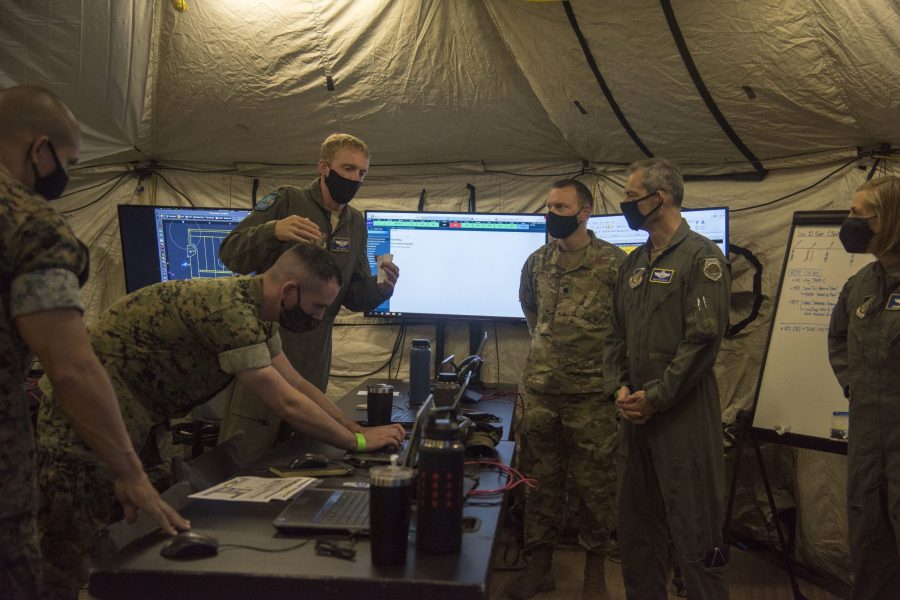The standout capability demonstrated the latest Valiant Shield/Advanced Battle Management System experiment in September was the detailed base-status system across the Indo-Pacific theater, according to Pacific Air Forces chief Gen. Kenneth S. Wilsbach.
The airbase status feature details which runways are open or damaged, how long repairs will take, how long sorties will be delayed taking off as a result, or where airborne aircraft should divert to, along with weather status and how full base aviation fuel tanks were, Wilsbach said at an AFA Mitchell Institute “Aerospace Nation” streaming event Oct. 27.
The information was “significant … and not generalized,” he said. “You had a pretty good idea of what you were dealing with,” and how the availability of the bases was influencing the pace of the exercise. It was the feature Wilsbach said he’d most like to have right away, and will be important as USAF deploys to a greater number of widely separated, and sometimes austere, operating locations.
Moreover, the presentations offered “ease of use,” he said. With only a short tutorial, “they were very user-friendly.”
There were other lessons learned from the experiment; some things went well, others “not so well,” but the so-called “on-ramp” accomplished the goal of creating new knowledge, without incurring any loss of simulated people or aircraft, he said. Wilsbach noted that one of the objectives of the ABMS demos is to “take risk” and learn in the doing.
Wilsbach said U.S. allies and partners in the region are eager to cooperate on ABMS, but the biggest hurdle to overcome is how to share information that can only be shared among certain partners.
“The way we section-off” information that can be shared with some partners but not others because of classification or “No Foreign” restrictions is one of PACAF’s biggest problems to solve when it comes to ABMS, he said. In some cases, to discuss intelligence with a particular ally means going to a “separate computer, … in a separate room,” which only slows things down.
“We want to fuse that network of networks,” so the same workstations can be used all the time, and some kind of software or artificial intelligence using given rules appropriately shares information with the partners that need it, Wilsbach noted.
“We need to … let software be the gatekeeper,” he said.
The exercise included a KC-46 flying around the Hawaiian Islands—with command-and-control capabilities onboard—as well as an air operations center under a tent at Joint Base Pearl Harbor-Hickam, Hawaii, he said. The tented AOC included troops from every service who would “huddle up” to determine the best approach to solve problems or address an unexpected threat. Sometimes “what may have been an air problem was solved with a maritime solution,” and vice versa, he reported.
He’s passed on the lessons learned to Gen. Jeffrey L. Harrigian at U.S. Air Forces in Europe-Air Forces Africa, which will be involved in the next two ABMS onramps, Wilsbach said.
